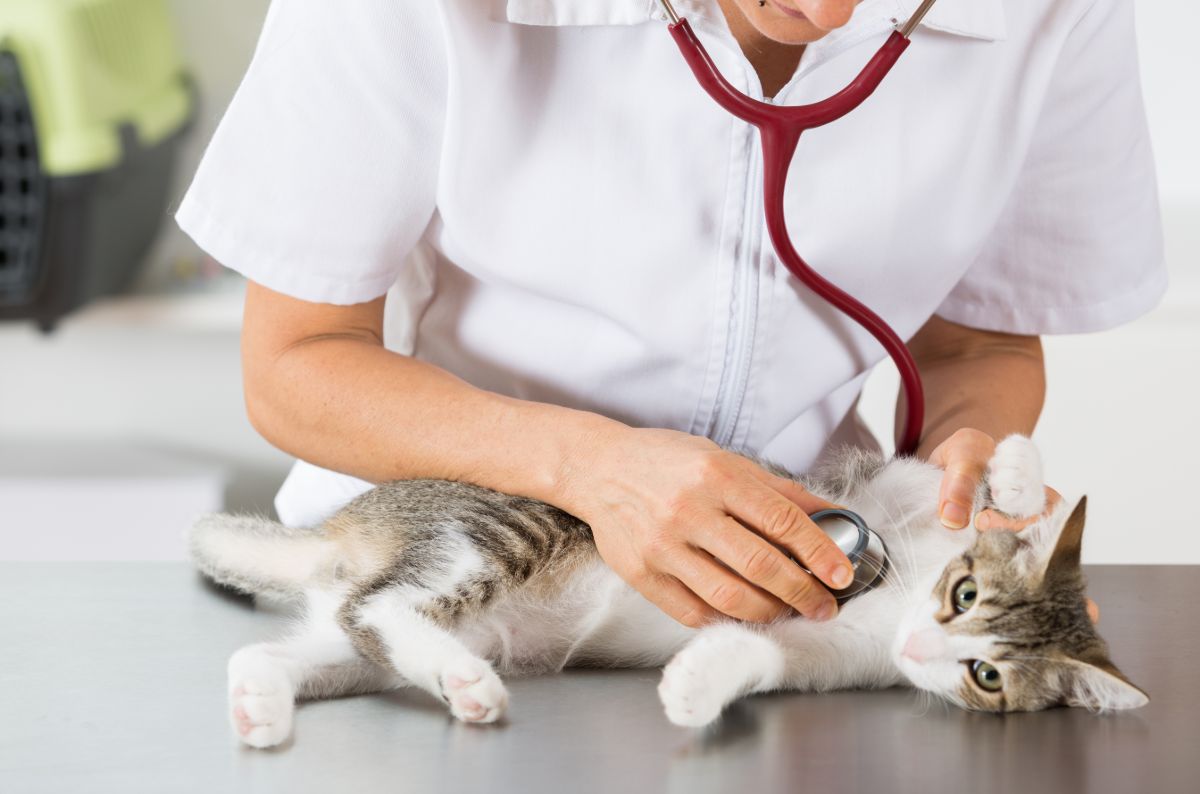Desexing cats and dogs
 Many cats and dogs are bred by accident, because owners don't desex their pets soon enough, or at all.
Many cats and dogs are bred by accident, because owners don't desex their pets soon enough, or at all.
It is possible for cats to breed from as young as 4 months of age.
Cats and dogs can breed if:
- they escape or are allowed to wander off the property
- other cats and dogs get into the yard and breed with confined pets.
Animal shelters do their best to rehome unowned cats, dogs, kittens and puppies. However, if a home cannot be found or an animal is unsuitable for rehoming, it may be euthanased.
Desexing is the solution
If you own a pet and do not intend to breed from it – have it desexed. Most cats and dogs can safely be desexed at 3 months of age.
You are less likely to forget to desex your pet if you have it done as soon as you get your pet.
Speak to your council about pet desexing, as some councils help pensioners or health care card holders with the veterinary costs of desexing. The National Desexing Network can also provide desexing vouchers and help people identify vets that provide discounted desexing to certain concession card holders.
Desexing your pet entitles you to a discount on your council pet registration fees, for the life of your animal.
Early age desexing
Traditionally, early age (prepubertal) desexing has been favoured, as it decreases certain health risks, prevents unwanted pregnancies, reduces sexual behaviours and reduces the risk of failing to desex a pet later in life.
Animal shelters have successfully undertaken early age desexing for more than 20 years.
Doing surgery on animals before they have fully matured, or had any litters, is much quicker and less risky as their reproductive tracts are smaller and the blood vessels are less developed.
Evidence supports early age desexing of all healthy cats. However, for some dogs it may depend on the individual dog’s breed, sex and lifestyle (Yates and Leedham, 2019).
The decision about when to desex your dog should always be made in consultation with your vet to consider your dog’s specific health needs, age and physical condition (Hart, Hart, Thigpen and Willits, 2020).
More about desexing
Desexing (also known as neutering) normally involves the removal of the testicles of males (also known as 'castration') or ovaries and uterus of females (also known as 'spaying') through surgery. It is one of the most common surgeries performed by vets in clinics and it is the only effective permanent method of preventing unwanted pregnancy in animals.
Generally, vets recommend desexing animals before they are capable of breeding. Desexing can be done from 3 months of age – this is called 'early age desexing'.
For female pets, desexing:
- decreases the chances of developing mammary cancer, especially when done before your pet's first heat. Mammary cancer is fatal in 90 per cent of cats and 50 per cent of dogs (Veterinary Cancer Etiology Cancer Management in Small Animal Practice, 2010)
- decreases the chances of infections of the uterus, which can be life-threatening (Hagmana, Lagerstedta, Hedhammara and Egenvallb, 2011)
- decreases the chances of developing cystic ovaries or uterine cancer (Veterinary Cancer Etiology Cancer Management in Small Animal Practice, 2010)
- decreases the desire to roam, which can result in unfortunate situations like getting lost, or hit by a car
- prevents animals coming on heat, which can be messy and pose behavioural problems such as the calling observed in queens.
For male pets, desexing:
- decreases the desire to roam, which can result in unfortunate situations like getting lost, or hit by a car
- decreases aggression, reducing the risk of attacks on humans and other animals. It also results in a reduced likelihood of fights between animals which risks injury or transfer of diseases
- decreases the chances of cancers including prostate cancer, testicular cancer and peri-anal cancer (Veterinary Cancer Etiology Cancer Management in Small Animal Practice, 2010)
- reduces or eliminates urine spraying by male cats
For the community:
- Prevents pregnancies and decreases the number of unwanted animals, which may otherwise be euthanised due to lack of homing options.
- Reduces wandering of cats in the environment, where they may harm native wildlife, frighten people, or cause car accidents.
Desexing myths debunked
- Desexing will not make your pets less active, or lazy.
- Desexing your pet does not mean they will become overweight, if diet and exercise are well managed.
- Desexing is not expensive, compared to the costs of caring for and feeding new litters, or the lifetime costs involved in keeping an animal.
- Females do not need to need to have at least one litter in order to have a fulfilling life.
References
- Yates, D, and Leedham, R, 2019, ‘Prepubertal neutering in cats and dogs’ In Practice [online], vol. 41, issue 7, pp. 285–298
- Hart, BL, Hart, LA, Thigpen, AP and Willits, NH, 2020b, ‘Assisting decision-making on age of neutering for mixed breed dogs of five weight categories: Associated joint disorders and cancers. Frontiers in Veterinary Science [online], vol. 7, article 472.
- Chapter 3 – Veterinary Cancer Etiology Cancer Management in Small Animal Practice (2010) pg 16–27
- Hagmana, R, Lagerstedta, A, Hedhammara, A, Egenvallb, A (2011) A breed-matched case-control study of potential risk-factors for canine pyometra, Theriogenology (75) 1251–1257